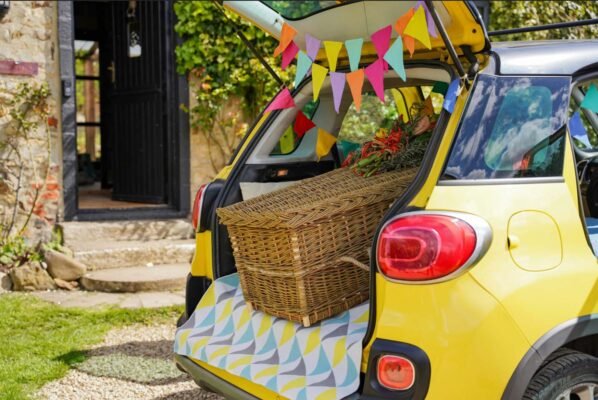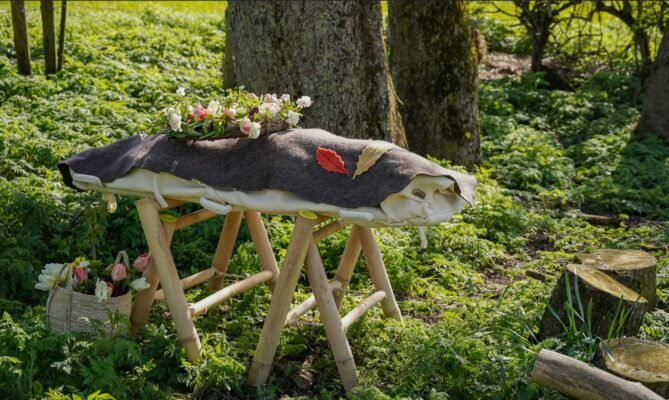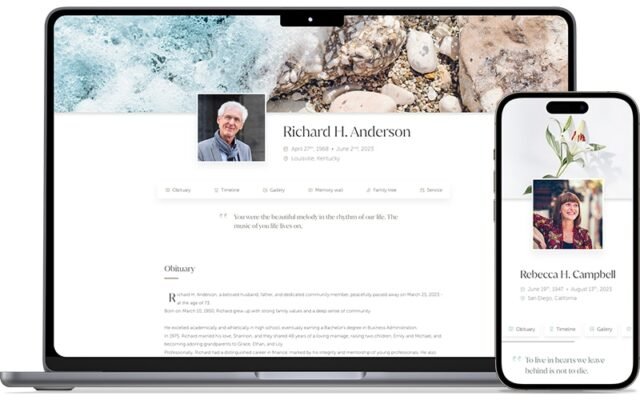The Future of Farewells
5 Ways the Funeral Industry is Evolving
What happens when tradition meets transformation in how we say goodbye
The way we approach death is shifting, quietly, but significantly. From digital planning tools to eco-conscious burials, the funeral industry is undergoing a transformation that reflects broader changes in how we live, connect, and remember. To better understand what’s driving this evolution, we spoke with The Farewell Guide, an independent platform that helps people plan more personal goodbyes, offering features such as end-of-life planning and funeral director comparison tools. Drawing from their experience working directly with families and funeral providers, they offered insight into how traditions are changing, and why that might not be a bad thing. In this piece, we explore five key ways the modern farewell is being redefined.
1. Planning Goes Digital
Death has long been something we manage offline, phone calls, pamphlets, awkward in-person appointments. But today’s generation of planners expect more intuitive, tech-friendly tools. Enter independent online platforms that centralise funeral information, costs, and services in one place.
As The Farewell Guide puts it:
“It used to be the case that you would have to get a spreadsheet up and a list of phone numbers to be able to get a clear picture of what’s out there when it comes to funeral providers, now all you need is one website and a few clicks.”
Digital planning doesn’t just streamline logistics, it gives families space to think, to breathe, and to make more informed, less rushed decisions. And for funeral directors, it means receiving more thoughtful, well-prepared enquiries, rather than last-minute panic calls.

2. Goodbye Cookie-Cutter
From curated playlists to location-specific ceremonies, families are rewriting the rules of the farewell. The idea that a funeral must follow a somber, uniform script is losing ground. What matters now is meaning.
One example shared by The Farewell Guide stood out:
“One family used our planning tools to create a playlist of their dad’s favourite songs for his service. Every track told a story; the one he danced to with their mum, the one he always played on Sunday mornings. It turned the ceremony into something that felt full of life and warmth.”
These choices, music, readings, locations, aren’t just embellishments. They’re emotional anchors. And in many cases, they’re what people remember most.

3. The Quiet Rise of Direct Cremation
For those seeking a simpler farewell, direct cremation is becoming an increasingly common choice. With no service beforehand, it offers an alternative to the traditional funeral format, and can be particularly helpful for families navigating distance, timing, or budget constraints.
The Farewell Guide raised some considerations around this growing trend, often chosen as a “no-fuss” option to reduce both cost and complexity for loved ones. While it can be a thoughtful and practical decision, it’s also worth reflecting on what kind of goodbye might offer comfort and closure for those left behind.
While there’s no formal service beforehand, many families still choose to mark the loss in their own way, through informal gatherings, shared meals, or other moments of reflection. The structure may be looser, but the sentiment remains.
4. Greener Goodbyes
With climate concerns growing, sustainability is now influencing even our final decisions. Biodegradable urns, woodland burials, and eco-friendly alternatives like hydro cremation, significantly reducing carbon emissions and energy use, are seeing more interest from those who want to tread lightly, right to the end.
People are now asking “What kind of legacy are we leaving behind?” That shift reflects a broader desire to make life (and death) more aligned with personal ethics and environmental awareness.

5. Grief Goes Online
As much of life moves online, so too does remembrance. Digital memorial pages, livestreamed funerals, and online guestbooks are becoming increasingly common, offering connection for those who can’t be there in person, or prefer to engage with grief in quieter, more private ways.
The Farewell Guide points out that online tools can actually bring people closer, not further apart, and highlights the value of embracing these evolving forms of farewell.
From social media tributes to shared photo albums and digital legacy platforms, new spaces for mourning and memory are emerging, reminding us that grief, like love, often finds its own way.

A Changing Industry, A More Human Farewell
These changes aren’t just logistical, they’re cultural. They reflect a growing desire to reclaim the narrative around death, to shape goodbyes that feel honest, and to make space for emotional truth over formality. Whether it’s a minimalist cremation or a carefully crafted memorial in the woods, today’s funerals are becoming less about rules and tradition, and more about resonance.
In the end, it’s about finding a way to say goodbye that feels meaningful, personal, and true to the person being remembered.

To find out more about The Farewell Guide, visit https://www.thefarewellguide.co.uk/
Photography by Dead Good Legacies

